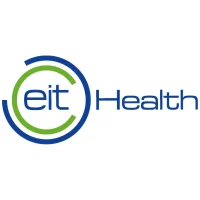‘Manual’ scheduling in healthcare is still very common leading to inefficient time-management and loss in revenues. Automating a scheduling system may help manage cancellations more efficiently and decrease the income lost.
You might also like:Virtual vs. In-Person Care During Pandemic
Digitalisation, and the internet in particular, has dramatically changed the operating models in all industries and allowed for better customer satisfaction. In healthcare, the adoption of electronic health records (EHR) has been on the rise, but not in a way that would benefit patients. One example is appointment scheduling, which is still mostly done in a ‘traditional’ way, by telephone or fax. Combining the capabilities of EHR with the scheduling process may, on the other hand, lead to a much higher operational efficiency and patient satisfaction, write a team of researchers in Medical Economics (Block et al. 2020). “Improving the patient experience in an era of medical consumerism is increasingly important going forward,” they note.
Currently, the usual process is the following: a patient calls the office to make an appointment and interacts with a responsible staff who looks through the schedule and suggests several time slots. The authors argue that this approach has several drawbacks.
First, it is not efficient for patients, as the staff member can only see a limited number of options to offer plus the patient has to wait on hold and healthcare “is notoriously known for having the longest hold times compared to other industries”. In addition, the suggested available times are not necessarily the most convenient for either the patient or their physician, which may result in more cancellations or no-shows.
Second, this procedure is time-consuming for staff compared to an automated system that is likely to process the request faster and with fewer mistakes – such examples can be seen in many other industries and especially since the beginning of the pandemic.
The last but not the least is the issue of the same-day cancellations, which may cause a substantial reduction in revenues. “For a physician, in an 8-hour shift with 20-minute reserved appointments, three unfilled cancellations cause a productivity decline of 12.5%,” according to the authors.
It is not rare for practices to have a confirmation system, usually within a 24-hour window, that help prevent no-shows. This, however, does not solve the problem of schedule optimisation, i.e. backfilling cancelled appointments.
What could an automated scheduling system do to address this issue? As a first step, a patient would need to answer several general questions as to their location, reason for visit, insurance, etc. Based on this information, the system would then automatically provide a list of available time slots for the patient to choose from. Importantly, in this case any cancellations would be immediately visible in the system and may be efficiently backfilled, for example through notifying other patients, already waiting for their appointment, about a free time slot.
All these could be performed directly via a smartphone application, without requiring any staff involvement. Some practices have taken this approach even further. They use patient behaviour to predict no-shows/cancellation and schedule appointments based on these predictions, similarly to how airlines oversell flights. Particularly, this approach may be useful with high-risk no-show patients.
In conclusion, the authors point out how practice now prioritise issues such
as billing or cutting physicians’ burnout. However, they note, incorporating EHR
data into the scheduling process would have multiple benefits in terms of both
practice operational efficiency and patient satisfaction.
Image credit: nigelcarse
via iStock










